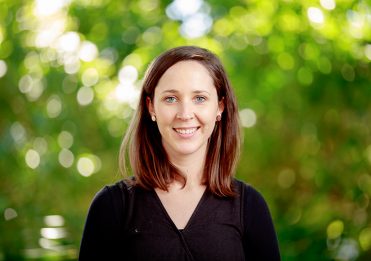Dr Belinda Burns, Director of Communications and Engagement
Originally published October 2017
The notion of ‘space’ as gendered dates back centuries, entangled with ideas of domesticity and child-raising as being ‘women’s work’ such that conventional coding has assumed a restrictive binary. Women, it was said, belonged in the home, whereas the preserve of men was the city—a site of adventure, danger and self-actualisation where stuff happened, decisions were made, history enshrined.
This binary is particularly apparent in Australia where, identified as the ‘feminine counterpoint to the masculine city’ (Brooks, 1998), the suburbs are traditionally coded ‘feminine’, associated with domesticity, routine and order. In our fiction, too, suburbia is mostly represented as a ‘female domain’ (Gerster, 1990), while also being devalued as a site incompatible with a narrative of transformation—a location from which to flee.
So, how can this abbreviated literary theory be applied to Brisbane Girls Grammar School and its situation within the public realm of the city, a precinct conventionally coded ‘masculine’? What does it mean to be a girls’ school within urban limits? How does our geography impact culture and learning?
History illuminates here. Opening its doors in 1875 as a branch of Brisbane Grammar School on George Street in what was then and still is now the eye of the city effected a resistance to the status quo. Sir Charles Lilley’s vision to provide girls with the same educational opportunities as their brothers was so far ahead of its time as to qualify as radical:
I believe that female education in this colony, indeed in every country in the world has been seriously neglected. We know that so far as any real knowledge is concerned the great mass of women have been left in complete darkness … (Sir Charles Lilley, 1873)
This was six years before women were admitted to universities in Sydney and Melbourne, a time when the ‘place of women’ was almost undisputedly assumed to be within the home, in the private sphere. Within six months the School, under the direction of Lady Principal, Janet O’Connor, outgrew its original premises and relocated to Wickham Terrace, before moving to Gregory Terrace where it stands today. This was not some tucked-away pocket of clandestine learning. Then, as now, Main Building pronounces itself without apology, waving her flag assertively, defiantly even, within our city ‘walls’—that realm of endeavour, industry and progress, that realm (supposedly) of men.
The subordination of domestic, ‘feminine’ spaces in Australian fiction, and how a cluster of contemporary women writers are actively resisting this trope by crafting transformational narratives set within the domestic confine, is the topic of my postdoctoral thesis. By writing about women undergoing transformative experiences without having to journey to the city, the bush or abroad, these writers defy retrogressive binaries that infer ‘masculine’ territories are worthier fictional sites. By re-claiming these maligned settings in their stories, this new wave reassert the value of ‘feminine’ spaces, while also critiquing the idea of gendered space ipso facto.
Marking the borders of our ‘feminine’ territory of learning within the ‘masculine’ city, the School’s white picket fence—an oft-vilified symbol of conformist domesticity—is similarly ‘re-claimed’ in refutation of unequal spatial codings that have limited women’s participation in the public sphere. Conversely, the fence (a relatively recent addition, invoked as a metaphor for graduation in the School’s contemporary lexicon) reads as proclamation—yes, this is a very feminine space, and yes, it exists within the city confine.
In this way, the situation of Brisbane Girls Grammar School, and its foundation, provides a fascinating study of resistance—for its time a radical assertion of girls’ rights to the same educational opportunities as boys within what would have been (more so than now) a proscribed masculine zone. Thus, our geography defies a restrictive spatial coding, which has worked in the past to curtail women’s liberty to participate fully in public life. The idea of young women at work on the business of learning within the masculine terrain of the city was, in 1875, a pioneering enterprise—literally labelled an ‘experiment’ at the time. Less so now, but still there is something uniquely definitive (and defiant) about our geography that connects to who we are as an educational institution and the calibre of our graduands.
Our girls, as they progress through their years at Girls Grammar, exist within the public realm of the city. They come here to work and to learn, to hone their critical skills, to push themselves in sport and the arts, meanwhile occupying, being ‘at home’ within, the urban, public vicinity. Forging strong bonds with their peers, already they are citizens of the city, and they must sense this, their right to be here—uncontested, unequivocal. The city, as much as their family home, is their place, too.
This vital connection to the public sphere is evidenced by the launch of the Dorothy Hill Observatory this month, affording extraordinary opportunities for our students to support scientists on astronomical research projects around the globe. Not only are our students part of the city, they are, very authentically, part of the world, part of the universe.
At Girls Grammar, we seek to isolate the secret ingredient—what makes a Grammar girl? For our girls are different. In mind and action, they are strong. As a sisterhood, they are ferocious. They believe in their potential, that they can make a difference. Most of all they are assured about their place in the world. Learning in the city, participating day in and day out in the public sphere, significantly contributes to this.
References
Brooks, K. (1998). Suburbia, abjection and subjectivity in Australian ‘grunge’ fiction [Special issue]. Australian Literary Studies, 18(4), 87-100.
Gerster, R. (1990). Gerrymander: the place of suburbia in Australian fiction. Meanjin, 49(3), 565-75.
Read reflective commentary from Director of Communications and Engagement, Dr Belinda Burns, on her article, ‘Behind the white picket fence: our ‘feminine space’ in the city’.
As argued in my original piece, ‘space’ has, for a long time, attracted gendered codings. Certain spaces—the court, the parliament, the club/pub, the sporting field, the bush—have at different points throughout history been the exclusive preserve of men. Conventional domains of women have, on the other hand, been interior realms of containment and limitation—namely ‘the home’, a sanctuary to some but a prison to others. Thank goodness times have changed and we live increasingly in a world free from gendered spaces (albeit not universally). The notion that a person could be restricted entry to a particular environment on the basis of their gender is as wrong, in my opinion, as restriction on the basis of race, and it is worth remembering those brave suffragists who did much to push through barriers restricting women’s freedoms.
The issue of space and gender has re-emerged recently in a study conducted by The University of Queensland, Hands Up For Gender Equality, which revealed a significant disparity between access to green space by girls versus boys at secondary schools throughout Australia. Overall, it found that boys had access to three times more green space than girls—a fact as unsurprising as it is unfair. Moreover, the study showed how such access to outdoor space correlated to levels of confidence in adolescents. It makes sense; simply being outside has a positive effect on mind and body. We move more freely, our bodies come alive through exertion, our imaginations roam—little children know this instinctively. Herein lies the legacy of discriminatory notions of gendered space, and wider damage caused by faulty stereotypes. Little boys run free outside; little girls sit indoors reading quietly.
Girls Grammar is not immune to the legacy that afforded boys more green space than girls, especially given its inner-city location. However, as one of the only girls’ schools in Australia to have its own outdoor education centre—Marrapatta Memorial Outdoor Education Centre—and since the acquisition of Rangakarra Recreational and Environmental Education Centre in 2013, the School has done much to remedy this historic imbalance. Despite the recent 2019 Australian Youth Confidence Report revealing that teenage girls are defecting from team sport, more than 70 per cent of Grammar girls participate in sport—a figure testament to the fact that our girls feel as at home on the sporting field or scaling a mountain range as in the library or classroom.




